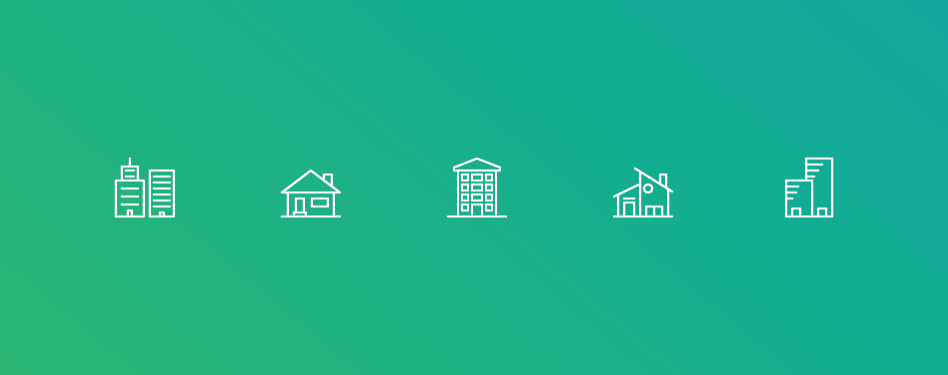No products in the cart.
LEED Certified Buildings Come in Every Shape and Size
Many individuals working in the construction industry are familiar with the Leadership in Energy and Environmental Design (LEED) program and have long considered it a value-add for commercial office buildings. But did you know that the LEED certification standards also apply to homes, communities, transit stations, and cities? Thus, all buildings can be LEED certified buildings.
If you’re new to LEED, please visit our Getting Started With LEED series.

LEED Focus Areas
The U.S. Green Building Council, or USGBC, created the LEED certification standards in the year 2000. Tasked with promoting sustainability-focused practices in the building and construction industries, USGBC staff and stakeholders identified key performance indicators of high-performance green buildings. They summarized these findings into categories that would form the basis of the LEED certification standards.
In short, all projects trying to become LEED certified buildings would have to meet criteria and achieve goals in the following areas to be worthy of the label:
- Location and Transportation
- Materials and Resources
- Water Efficiency
- Indoor Environmental Quality
- Energy and Atmosphere
- Sustainability Sites
- Regional Priority Credits
- Innovation
Moreover, there are unique responsibilities and strategies that apply to new construction projects versus existing buildings projects. For this reason, the USGBC designed several pathways, or LEED Rating Systems, to help guide project teams to meet the LEED certification standards according to their building type.
The LEED Rating Systems
In the early and mid-2000s, the only types of projects seeking LEED Certification were generally summed up into three categories: new construction, existing buildings, or interior fit-outs.
As LEED has grown in popularity, the program has evolved to include multiple building types. New construction, existing buildings, and interior fit-outs still play a core role; however, the USGBC has expanded their definition of building types that belong in these categories and have added new categories.
Let’s take a look at the LEED Rating Systems and the common market sectors that fall within these categories.
LEED for Building Design and Construction
- New construction & major renovations
- Core & shell development
- Schools
- Retail
- Data centers
- Warehouses & distribution centers
- Hospitality
- Healthcare
- Homes & multifamily lowrise
- Multifamily midrise
LEED for Building Operations + Maintenance
- Existing buildings
- Retail
- Schools
- Hospitality
- Data centers
- Warehouses & distribution centers
LEED for Interior Design + Construction
- Commercial interiors
- Retail
- Hospitality
LEED for Homes
- Homes & multifamily lowrise
- Multifamily midrise
LEED for Neighborhood Development
- Plan certification
- Built project certification
The USGBC recently introduced three new rating system pilots too: LEED for Cities, LEED for Communities, and LEED v4 O+M: Transit.
Although we’re at the early stages of the new pilot categories, it already appears as though there will be some stark differences with how they will be carried out; LEED for Cities and LEED for Communities, for example, will be managed through USGBC’s new software platform called Arc, instead of LEED Online. Also, Transit appears to be a segment of LEED for Building Operations + Maintenance instead of its own rating system.
We look forward to watching how these pilots grow and evolve. We’ll be sure to write unique posts about each, so check back with us!

It’s rather impressive that the USGBC has been able to grow the LEED certification program the way it has. There’s no turning back now. LEED is here to stay and will soon be standard practice for the design, construction, and operations of ALL building types.
To get involved, you’ll want to participate in a LEED training program and study to become a LEED Green Associate. At Everblue, we specialize in LEED exam prep training, and we can help you transition into a sustainability-focused role within your organization. Get started today!